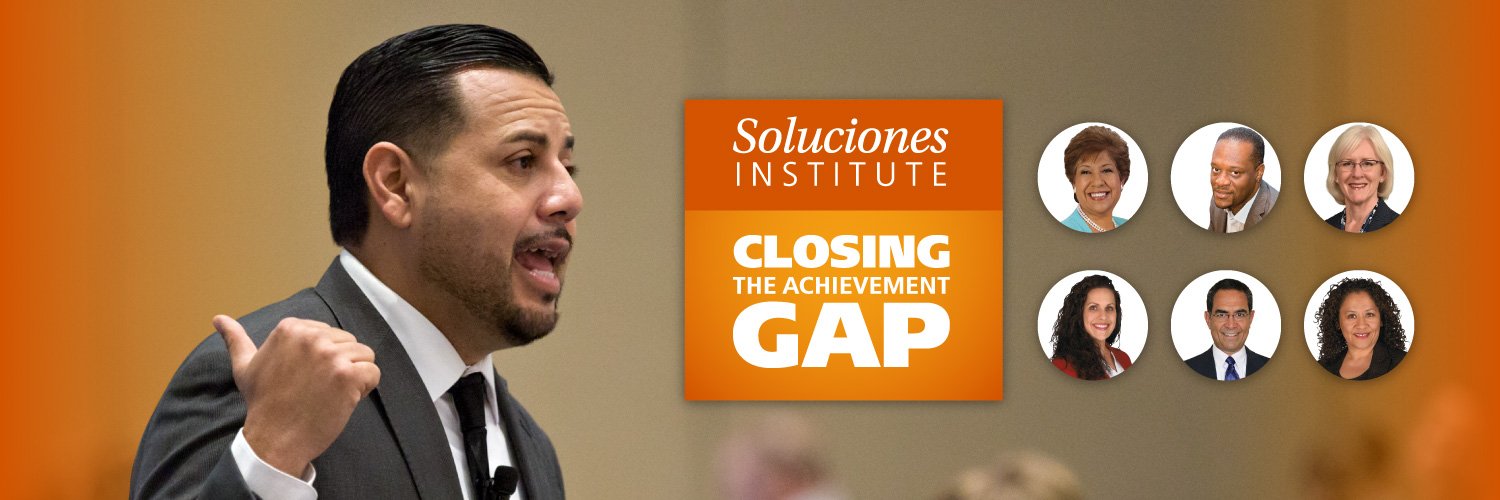This post is part of an ongoing series on the topic of Eliminating the Achievement Gap for Latino Students.
The opening line to Charles Dickens’ classic novel The Tale of Two Cities, “It was the best of times, it was the worst of times” could be referenced today to describe the state of Latino students in the public education system of the United States. According to the non-profit organization Excelencia in Education’s, 2015 publication of The Condition of Latinos in Education, the following statistics hold true today:
- The National Assessment of Educational Progress (NAEP) indicates that while Latino students have increased both math and reading scores by double digits over the last 10 years, Latino students continue to score below the national average.
- While Latinos represent the second largest group of the early childhood population, Latino children were less likely to be enrolled in early childhood education than other ethnic groups.
- While the Latino dropout rate from high school has decreased, it still remains higher than any other ethnic group.
- While Latinos represented 17% of SAT test-takers for 2013 college bound seniors, they also had lower mean scores in all areas of the SAT than did White, Asian, or American Indians/Alaska Native college-bound seniors.
While significant strides are being made to close the achievement gap for Latino students, an important question remains: What must schools and/or districts serving large Latino student populations do to eliminate the achievement gap for Latino students?
As the former principal of an elementary, middle and high school serving a mostly low-income Latino student population, it became evident to me that eliminating the achievement gap for Latino students would require a multi-faceted approach. This multifaceted approach is found in the areas of leadership, instruction, parent involvement, and a keen understanding of the role social emotional learning in the form of effective relationships between students and adults looks like throughout the organization.
Rethinking organizational leadership
Effective leadership in schools serving large Latino student populations, for example, must be revisited as the responsibility of an array of teams that must include teachers, support staff, and administration working collectively to focus in on increasing learning for the students they serve. These teams must develop a shared understanding of best practices and then tactfully begin to mold a school culture whereby a hunger to increase learning for all students is embraced by all, but especially by the adults who work at the school. These teams spend a significant amount of time analyzing both quantitative and qualitative data aimed at providing a real time indication of whether or not students are demonstrating learning. If factual evidence of learning is found, the team shares with the school community the good news and celebrates the accomplishment. If evidence of learning is not achieved, the team initiates an atmosphere of collective inquiry aimed at researching best practices followed by implementation of ideas that may yield the evidence of learning sought.
Rethinking the definition of effective instruction
Teachers must accept the fact that instruction is only effective if evidence of student learning serves as the end result. Consequently, teachers will have to abandon teaching in isolation as the norm, and instead embrace working as a team to reflect on their instructional delivery. Furthermore, teachers will need to embrace the research on how Latino children learn and ensure that an engaged classroom experience for their students is an integral part of the daily routine throughout the school.
Parent involvement as a means of parent empowerment
The parent community must be embraced as an asset in the quest to increase student learning, and channels of communication must be established to solidify this ongoing partnership. Initiating this process will reveal to educators that the belief that Latino parents do not care for the educational well-being of their children is a myth, and that a collective effort to teach our parents why and how they can contribute to the process of accelerating learning both at school and at home is necessary. An investment to increase parent involvement will over time reveal the origin of parent empowerment, a welcomed condition whereby parents begin to take ownership of their school and hold members of the school community accountable to produce high levels of learning for the students they serve.
The role of the support staff
Adults throughout the school, especially members of the support staff (secretaries, custodians, cafeteria workers, etc.), must be introduced to the vital role they can have in the academic achievement of Latino students. Social emotional learning in the form of relationships conducive to supporting student learning is an essential component of the formula needed to empower students to take an active role in accelerating their learning. Leaders must begin to utilize human resources in a manner that extends beyond the “management’ of the school and instead institutionalizes the innate desire adults throughout the organization may have to make a positive difference in the lives of students.
Eliminating the achievement gap for Latino students will only be accomplished if schools and districts focus on enhancing each of the strands noted in this narrative. Solution Tree invites you to learn from educators who have applied these principles at Soluciones to be held in Dallas, Texas on November 15-17, 2017.
While there is no doubt that the effective implementation of each of the strands noted (leadership, instruction, parent involvement and social emotional learning) would prove beneficial to students of any background, it will be critical to the overall state of the Latino community that practices such as the ones observed become common practice in schools serving a majority Latino student population. The future state of the Latino community depends on it.
[author_bio id=”248″]







